
In order “To know a spider you must first look into its eyes” – literally! Readers can do so in this fascinating look at a variety of spiders through a series of close up, full color photographs and lucid text to describe the characteristics of spiders. Even those with arachnophobia will appreciate the unusual but thorough approach to these creatures.
Spidermania: Friends on the Web
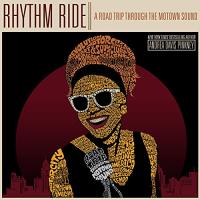
Listen to the “groove” as readers make their way through the history of Motown, the people who made and performed it, and the times in which it was performed. The history of Motown is inextricably tied to the history of African Americans in the U.S. and is presented here in vivacious narrative and extended by images of the time. Source notes and other back matter complete the riveting portrait.
Rhythm Ride: A Road Trip Through the Motown Sound

Join National Geographic Explorer, Daniel Raven-Ellison, as he takes a comprehensive look at wolves and what individuals can do to help their survival in the wild. Handsome full color photographs are interspersed with text for an appealing format in this informative and empowering presentation.
Mission: Wolf Rescue

This episode details the time when Benjamin Franklin was in France and how he explained the mysterious cures proffered by Dr. Franz Mesmer. The light touch in a format reminiscent of a graphic novel makes the snippet of history accessible and appealing. Source notes complete the book.
Mesmerized: How Ben Franklin Solved a Mystery that Baffled All of France

Glimpse stories from the childhoods of well-known athletes from a variety of sports. People range from Babe Ruth to Yao Ming, Julie Krone to Tiger Woods with lots in between. Cartoon illustrations are sprinkled throughout for an inviting package that ends with a bibliography and an index.
Kid Athletes: True Tales of Childhood of Sports Legends

The author/illustrator’s look back at his early years started in Drawing from Memory (2011) continues here. Allen doesn’t really fit in at his father’s friend’s Southern California military academy. Leaving it was the start of a journey toward finding the artist within. Told through a variety of artistic pieces and styles and a highly person narration, readers will empathize and ache with this Caldecott winning artist.
The Inker’s Shadow
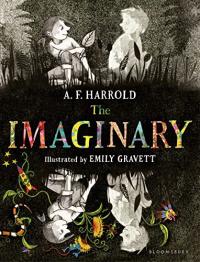
Rudger, Amanda’s imaginary friend, and Amanda, a human girl share adventure (and alternate telling the story) of their everyday adventures – and how they thwart an evil plot to rid the world of all imaginaries. Tension builds in this well-paced, inventive novel enhanced by evocative black/white illustrations.
The Imaginary

Delphine is now twelve years old in this third (and final book) about her, and her younger sisters. The girls are sent to Alabama where they are supposed to come to know their grandmother, great grandmother, and other family members. Instead, the girls are caught up in a family feud and learn that adults, too, have issues. Things change radically when Vonetta goes missing during a tornado. Family history and sibling loyalty are strong themes in this engaging conclusion.
Gone Crazy in Alabama

Boy genius, Frank Einstein, and friends explore energy and other science topics as they relate to their everyday interests. The latest in the series is filled will wordplay, science ideas and additional silliness to engage even the most reluctant readers. The heavily illustrated book will not disappoint Frank Einstein fans.
Frank Einstein and the Brain Turbo
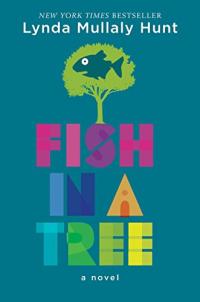
Even though she’s a math whiz, sixth grader Ally struggles to make sense of words on a page — that is until she meets Mr. Daniels. Ally discovers that she has dyslexia. Mr. Daniels is studying for a degree in helping children learn to read using different techniques — which open Ally’s world in many ways. Based on the author’s own experiences, Ally’s voice is successfully used to create a realistic and touching novel.
Fish in a Tree
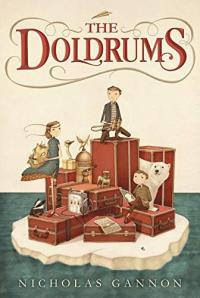
Since his grandparents disappeared on an iceberg, Archer’s mother won’t let the well-mannered boy out of the museum-like house. Still, he finds unique adventures and companionship in this fast-paced, charming, witty and well written novel presented in a handsomely illustrated format.
The Doldrums
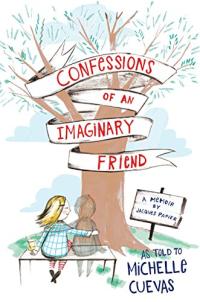
Eight year old Jacque Papier wonders why he is ignored by everyone; is it because they dislike him? However, he learns that he isn’t quite real. Does an imaginary friend exist if no one imagines him? Readers will certainly find Jacque, his imaginary associates as well as the more tangible characters authentic in this gentle and wise “memoir.”
Confessions of an Imaginary Friend: A Memoir
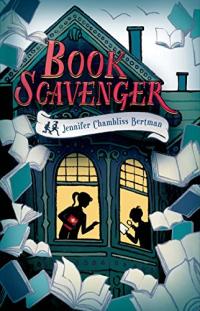
Emily doesn’t mind her family’s annual move because San Francisco is home to Garrison Griswold, book publisher. But there’s a nefarious plot against Griswold, creator of Book Scavenger. How will Emily and her new friend, James, solve the mystery? Find out in this fast-paced, often funny, sometimes tense mystery-adventure.
Book Scavenger
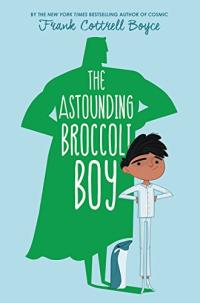
Strange and humorous adventures begin when Rory and his nemesis, Tommy-Lee, are placed in a secret isolation ward when they turn bright green from a strange ailment. Rory’s understated narration reveals likeable, quirky characters in unlikely but engaging circumstances.
Astounding Broccoli Boy

When the goal is supporting excellent teaching, there is no “one-size-fits-all” approach. This popular practitioner resource and text helps readers navigate the many choices involved in developing and fine-tuning a coaching program that offers the best fit for a particular school. The authors draw on current research as well as their extensive experience in K-8 settings. They provide clear guidance (with helpful reproducibles) on: (1) Major coaching models and how to choose among them; (2) Applying principles of adult learning and motivation; (3) The role of reading assessment in coaching; (4) Balancing classroom-level, grade-level, and whole-school tasks; and (5) Special considerations in middle school coaching.
The Literacy Coaching Challenge: Models and Methods for Grades K-8
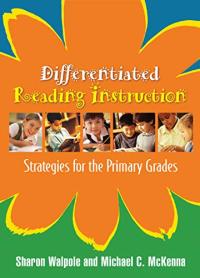
This book provides a research-based framework for making differentiated instruction work in the primary grades. It includes scientifically validated techniques for teaching each component of the beginning reading program. The authors describe how to use assessment to form differentiated small groups and monitor student progress; plan which skills to target and when; and implement carefully selected instructional strategies. Vivid classroom examples illustrate what differentiated instruction looks like in action in each of the primary grades. For additional helpful resources, including classroom-ready lesson plans, teachers can purchase the complementary volume, How to Plan Differentiated Reading Instruction: Resources for Grades K-3.
Differentiated Reading Instruction: Strategies for the Primary Grades

This bestselling book gives preservice and practicing literacy coaches the tools they need to build a successful schoolwide reading program. The authors, well-known experts in the field, describe the literacy coach’s crucial, evolving role in today’s schools. They offer step-by-step guidelines for implementing curricula and assessments, selecting instructional materials, and planning for differentiation and intervention. Specific ways to support teachers by providing high-quality professional development are discussed. The book is grounded in state-of-the-art research on PreK-5 instruction and the characteristics of effective coaches. New to this edition: (1) Incorporates the latest research and instructional materials; (2) Expanded grade range now includes PreK and grades 4-5; (3) Content on RTI and the Common Core standards; and (4) Strategies for making professional development more responsive to teachers’ needs.
The Literacy Coach’s Handbook, Second Edition: A Guide to Research-Based Practice
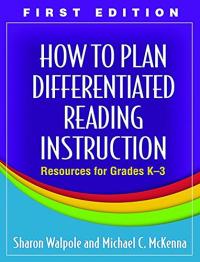
Offering step-by-step guidance to simplify planning and decision making, this book reviews the basics of differentiated reading instruction and provides detailed, ready-to-use lesson plans and materials to help teachers hit the ground running. Teachers get everything they need to implement four types of instructional groups over multiple three-week cycles. For fluency, vocabulary, and comprehension, lessons are based on popular, inexpensive trade books. For phonemic awareness and word recognition, dozens of reproducibles are provided, all in a convenient large-size format. The book can be used on its own or as a complement to Differentiated Reading Instruction: Strategies for the Primary Grades, which offers a complete introduction to the authors’ approach.
How to Plan Differentiated Reading Instruction: Resources for Grades K-3

This book guides teachers in grades 6-12 to strategically combine a variety of texts – including literature, informational texts, and digital sources – to meet their content-area goals and the demands of the Common Core State Standards (CCSS). It presents clear-cut ways to analyze text complexity, design challenging text sets, and help students get the most out of what they read. Practical instructional ideas for building background knowledge, promoting engagement, incorporating discussion and text-based writing, and teaching research skills are provided. Appendices offer sample unit plans for English language arts, history/social studies, and science classrooms. More than 20 reproducible coaching templates and other tools can be downloaded and printed.
Cracking the Common Core: Choosing and Using Texts in Grades 6-12

A landmark book for parents on why, when, and how to prepare children for going to school and how to support them in the critical early school years. The Rameys lead parents through the various aspects of supporting a child’s schooling, such as fostering good social skills, choosing a school, establishing family routines, and assessing academic progress. This book is based on the Ramey’s twenty years of research, including their National Transition-to-School Demonstration Project, which involved over 8,000 children from kindergarten through third grade.
Going to School: How to Help Your Child Succeed

A concise, up-to-the-minute guide for parents on what the latest research says–and doesn’t say–about enhancing child development and early learning in the critical first 18 months of life. Internationally renowned child development experts Dr. Craig Ramey and Dr. Sharon Ramey have written a readable, informative book that tells parents what works and what counts in raising good-natured, capable, confident, caring, and accomplished children right from birth.
Right From Birth: Building Your Child’s Foundation for Life
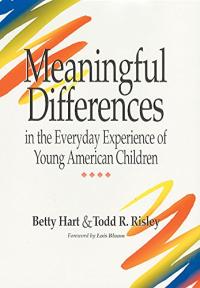
Meaningful Differences in the Everyday Experience of Young American Children is the landmark research study that uncovered the widely cited “word gap” between children from low-income homes and their more economically advantaged peers. For 2-1/2 years, Haet and Risley recorded every word spoken at home between parent and child in 42 families, categorized as professional, working class, or welfare families. Between professional and welfare parents, there was a difference of almost 300 words spoken per hour. Extrapolating this verbal interaction to four years, a child in a professional family would accumulate experience with almost 45 million words, while an average child in a welfare family would hear just 13 million — coining the phrase “the 30 million word gap.” Hart and Risley’s follow-up studies at age 9 show that the large differences in children’s language experience were tightly linked to large differences in child outcomes. By giving children positive interactions and experiences with adults who take the time to teach vocabulary, oral language concepts, and emergent literacy concepts, children should have a better chance to succeed at school and in the workplace.
Meaningful Differences in the Everyday Experience of Young American Children

This companion to the award-winning Meaningful Differences in the Everyday Experience of Young American Children reveals how daily child-parent social interactions govern children’s language and social development. Based on data from 2-1/2 years of observing the everyday interactions of 1- and 2-year-old children learning to talk in their own homes, Hart and Risley have charted the month-by-month growth of the children’s vocabulary, utterances, and use of grammatical structures. The narrative highlights reliability-tested research findings and is supplemented with numerous transcripts from observations and a list of 2,000 words of children’s expressive vocabulary from 19-36 months of age.This book is must-reading for professionals in speech and language, child development, psychology, and education who need to understand how children come to talk as much and as well as their parents and caregivers.
The Social World of Children Learning to Talk

Children, Schools, and Inequality examines elementary school outcomes in light of the socioeconomic variation in schools and neighborhoods, the organizational patterns across elementary schools, and the ways in which family structure intersects with children’s school performance. Adding data from the Baltimore Beginning School Study to information culled from the fields of sociology, child development, and education, this book suggests why the gap between the school achievement of poor children and those who are better off has been so difficult to close. The authors show why the first-grade transition — how children negotiate entry into full-time schooling — is a crucial period. This book can inform educators, practitioners, and policymakers, as well as researchers in the sociology of education and child development.
